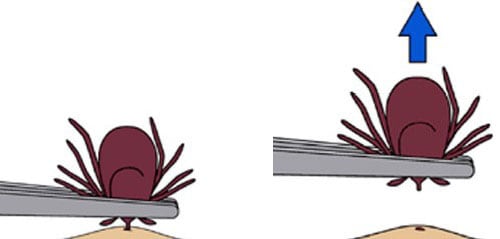Nature Sometimes Nurtures Threats to Health
"There are challenges related to Lyme disease. It is spreading, there is no doubt about that, and people have faced challenges sometimes getting early diagnosis and getting the treatment they need."
"That is what this conference [national conference, Health Canada-sponsored, on Lyme disease] is about."
"There are still many unanswered questions. I hope the conference will spur enthusiasm to answer those questions in a rigorous, scientific way."
Health Minister Jane Philpott
"We, as the medical community in Canada, are failing our patients. What we heard [from Lyme disease sufferers speaking from personal experience at the conference] reflected dismissiveness, clinical arrogance, condescending patient contact, prejudicial treatment and humiliation. It just about brought me to tears."
Dr. Ralph Hawkins, Calgary physician
 |
|
|
"We need to truly identify the burden of Lyme borreliosis currently in our chronically ill population, and to find better ways to identify future victims of the disease."
"And here we are in 2016 and Canada has no idea how many Canadians now or over the previous decades contracted Lyme disease because the protocols in place for testing and clinical diagnostics have had big gaping holes and still do."
Jim Wilson, president, Canadian Lyme Disease Foundation
 |
| An informational card about ticks distributed by the Maine Medical Center Research Institute is seen in the woods in Freeport, Maine on May 9, 2014. (AP Photo/Robert F. Bukaty) |
Lyme disease has been around for awhile, presenting as a danger to people unaware of the problem that these tiny ticks carried mostly by deer (but also by mice) can potentially cause a debilitating disease that will change an individual's health for their lifetime, if not caught early enough. It was a problem south of Canada for decades until it finally invaded Canada as well. Now those vector ticks can be found in southern British Columbia, Manitoba, Ontario, Quebec, Nova Scotia and New Brunswick.
The infectious disease is caused by Borrelia burgdorferi bacteria carried by deer ticks. Two species of ticks have been identified in Canada known to suck on the blood of humans and other animals as well. These are very small ticks resembling small flat watermelon seed, and they can manage to find access to human skin by burrowing up into loose clothing to enable them to attach to the skin. The ticks seek haven in dark, damp places and can be picked up walking through long grass, and forested areas.
Over 700 cases of Lyme disease were reported to the Public Health Agency of Canada in 2015, a considerable increase from the 140 cases reported six years earlier. Early detection results in a brief protocol of antibiotics that succeeds in curing most people of the disease. But left untreated, Lyme can result in facial palsy, meningitis, heart problems, nerve damage and inflammation of the brain and spinal cord. For the most part the Lyme disease bacteria is transmitted when the tick has been attached to skin for 36 to 48 hours or more.
Immediate symptoms of Lyme disease include fever, headache, body pain, fatigue and in some cases a bull's-eye rash at the site of the bite. These symptoms are those most commonly seen, but do not necessarily have to appear, since some affected individuals react differently and don't exhibit the rash that seems to typify Lyme. The absence of the tell-tale rash makes it difficult for patients to get early diagnosis and timely treatment, since many doctors never having had exposure to the disease can be unfamiliar with its hallmarks.
Over 100 people spoke at the conference that took place at the Government Conference Centre in Ottawa -- the first in Canada to discuss this growing problem -- about their experience with Lyme disease. They described their frustration in finding a physician able to give them a diagnosis and treatment. Little wonder many felt their condition is not taken seriously. The testing for Lyme disease is an imprecise science in Canada. Some people pay independently for testing at private laboratories specializing in Lyme disease in the United States.
Recommended precautions include:
If you find a tick attached to your skin, there's no need to panic. Several tick removal devices are available on the market, but a plain set of fine-tipped tweezers will remove a tick effectively.
- Cover up with light-coloured clothing to spot ticks more easily.
- Walk in the centre of designated trails.
- Wear closed-toed shoes.
- Tuck your pant legs into your socks to prevent ticks from crawling up your legs.
- Tuck your shirt in to prevent ticks from getting onto your skin.
- Use insect repellents that contain DEET or Icaridin.
- Have a friend give a quick scan at regular intervals to check if a tick is crawling on you.
- Shower or bathe within two hours of being outdoors to wash away loose ticks.
How to remove a tick
- Use fine-tipped tweezers to grasp the tick as close to the skin's surface as possible.
- Pull upward with steady, even pressure. Don't twist or jerk the tick; this can cause the mouth-parts to break off and remain in the skin. If this happens, remove the mouth-parts with tweezers. If you are unable to remove the mouth easily with clean tweezers, leave it alone and let the skin heal.
- After removing the tick, thoroughly clean the bite area and your hands with rubbing alcohol, an iodine scrub, or soap and water.
- Dispose of a live tick by submersing it in alcohol, placing it in a sealed bag/container, wrapping it tightly in tape, or flushing it down the toilet. Never crush a tick with your fingers.
Follow-up
If you develop a rash or fever within several weeks of removing a tick, see your doctor. Be sure to tell the doctor about your recent tick bite, when the bite occurred, and where you most likely acquired the tick.Labels: Canada, Disease, Environment, Health, Medicine, Nature


0 Comments:
Post a Comment
<< Home